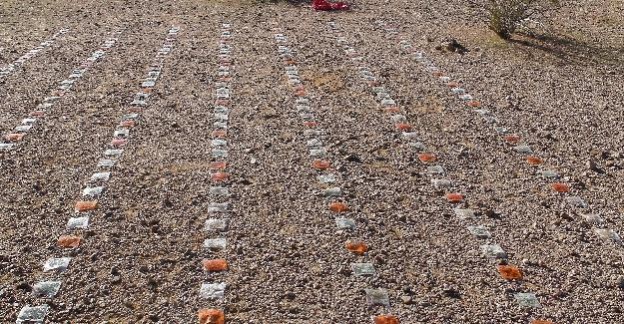Niche differentiation of ammonia-oxidizing microbial communities and their function in soil
Soil archaea and bacteria are known to oxidize ammonia to nitrite in a key pathway of nitrification. The nitrogen (N) cycle may be affected by N inputs from natural (e.g. mineralization) or anthropogenic (e.g. atmospheric deposition) sources. Most research has shown that N enrichment alters ammonia-oxidizing microorganisms, increasing ammonia oxidation (AO) rates and abundance of ammonia-oxidizing putative enzymes. However, the archaea and bacteria, and subgroups within each microbial group, may respond uniquely to available NH4+ concentrations and to changes in the environment. We ask, what are the dynamics that control ammonia-oxidizing communities and their effects on ecosystem processes? We used soils from N fertilized (NH4NO3 added at 60 kg N ha-1 yr-1 since 2005) and unfertilized Sonoran Desert soils near Phoenix, Arizona, to measure AO using the nitrite-accumulation method. To test for effects of patch type in aridlands, soils were also collected away from plants and under the canopy of creosote shrubs. In the lab, we measured potential rates using shaken-slurries and actual net rates using static incubations. Rates were measured under a range of starting NH4+ concentrations to develop a response-curve of AO kinetics. Additionally, ammonia-oxidizers were quantified using real-time PCR and identified to the species level using clone libraries and pyrosequencing (data processed with Qiime).
Long-term N fertilization increased rates of potential and actual AO in soil away from and under plants. Based on molecular analyses, N fertilization increased diversity and absolute number of ammonia-oxidizers in the total community. Additionally, one archaeon population makes up 74-95% of all the ammonia-oxidizers across treatments and patch types in these desert soils. Interestingly, inspection at a fine level of resolution within the archaea and bacteria reveal that many individual populations either increase or decrease, exhibiting niche separation through a community shift. Furthermore, the rate of AO per copy number of ammonia-oxidizing cells (i.e. AO efficiency), increases with N fertilization. These results suggest that environmental N addition in aridland soils alters ammonia-oxidizing communities at the genetic level and elevates nutrient cycling rates at the ecosystem scale.
Litter decomposition in arid systems
Litter decomposition is a key pathway in the global carbon (C) cycle, releasing more C into the atmosphere annually than fossil fuel combustion. While litter decay in mesic systems is reasonably well predicted by empirical models based on climatic and litter chemistry factors, this is not the case in arid systems. Specifically, mass loss in arid systems is faster than predicted and decay patterns are near linear rather than exponential. Recent research has revealed that breakdown of litter by solar radiation (photodegradation) can be a significant driver of mass loss in arid systems, although the relative strength of this driver appears quite variable. The UV component of sunlight appears to be the most effective waveband in driving mass loss, and lignin appears to be the main target. We propose that the optical properties of leaf litter vary substantially among different plant growth forms, and that this has a large influence on the effectiveness of photodegradation. We suspect that the surface UV-screening of leaf litter is greatest in evergreens, intermediate in grasses, and least in forbs. Screening effectiveness is important because it dictates radiation fluxes inside litter, such as in vascular tissue where the majority of lignin resides. We also suspect that effective surface screening persists much longer in evergreen litter than in grasses or forbs, because of the high concentrations of wall-bound screening compounds in evergreens that are not be readily lost during decay. Hence, photodegradation may become a stronger driver of decay much earlier in the decomposition of forb and grass litter than evergreen litter. We contend that these changes in the potential effectiveness of photodegradation during decomposition may explain the relatively linear litter decay patterns, as well as the variable effectiveness of photodegradation, found in arid systems.
